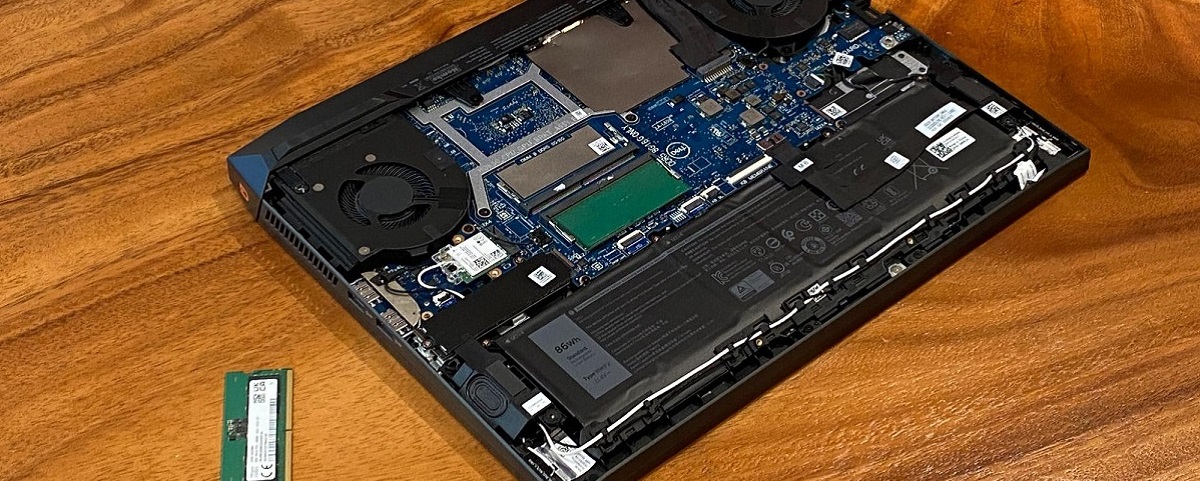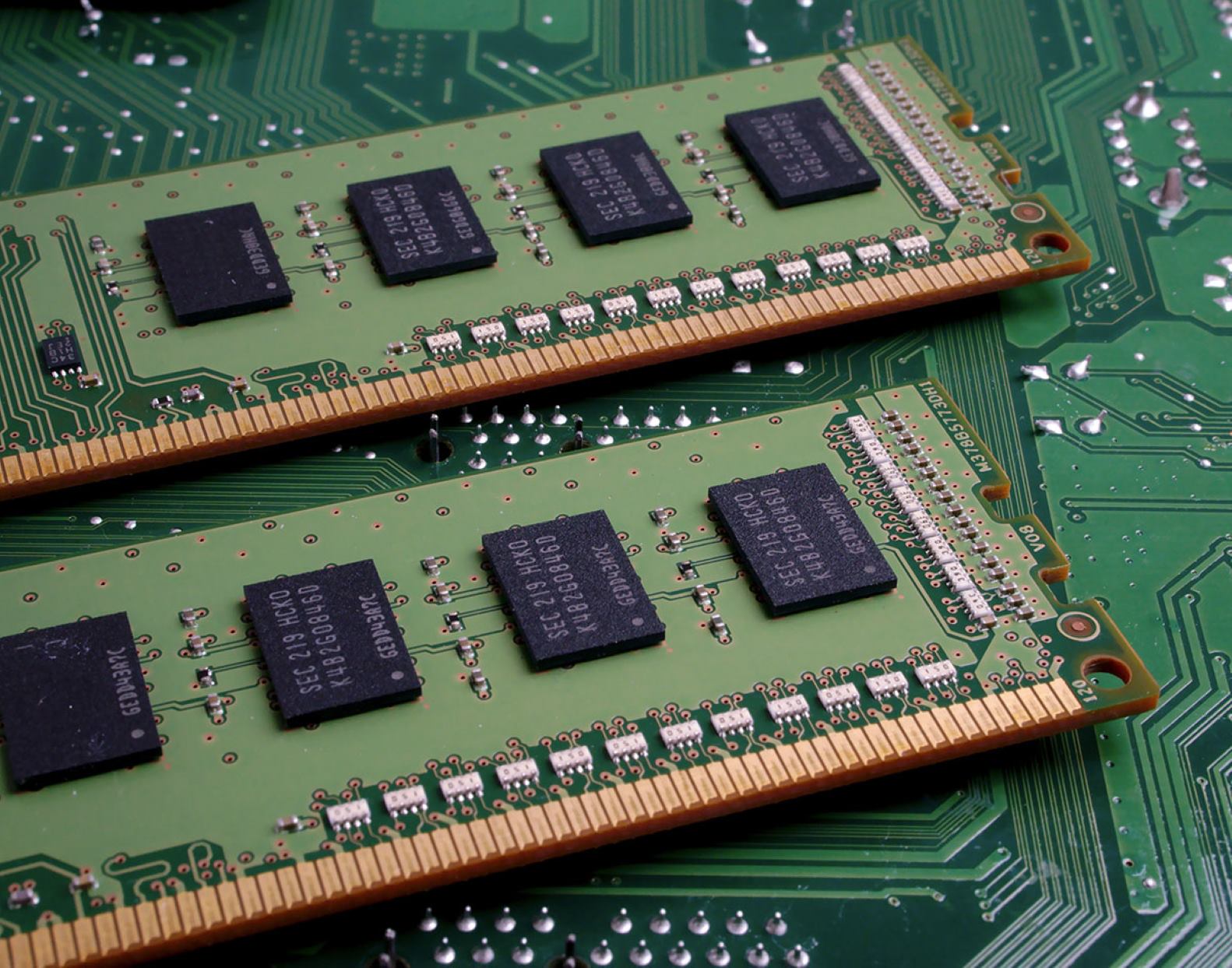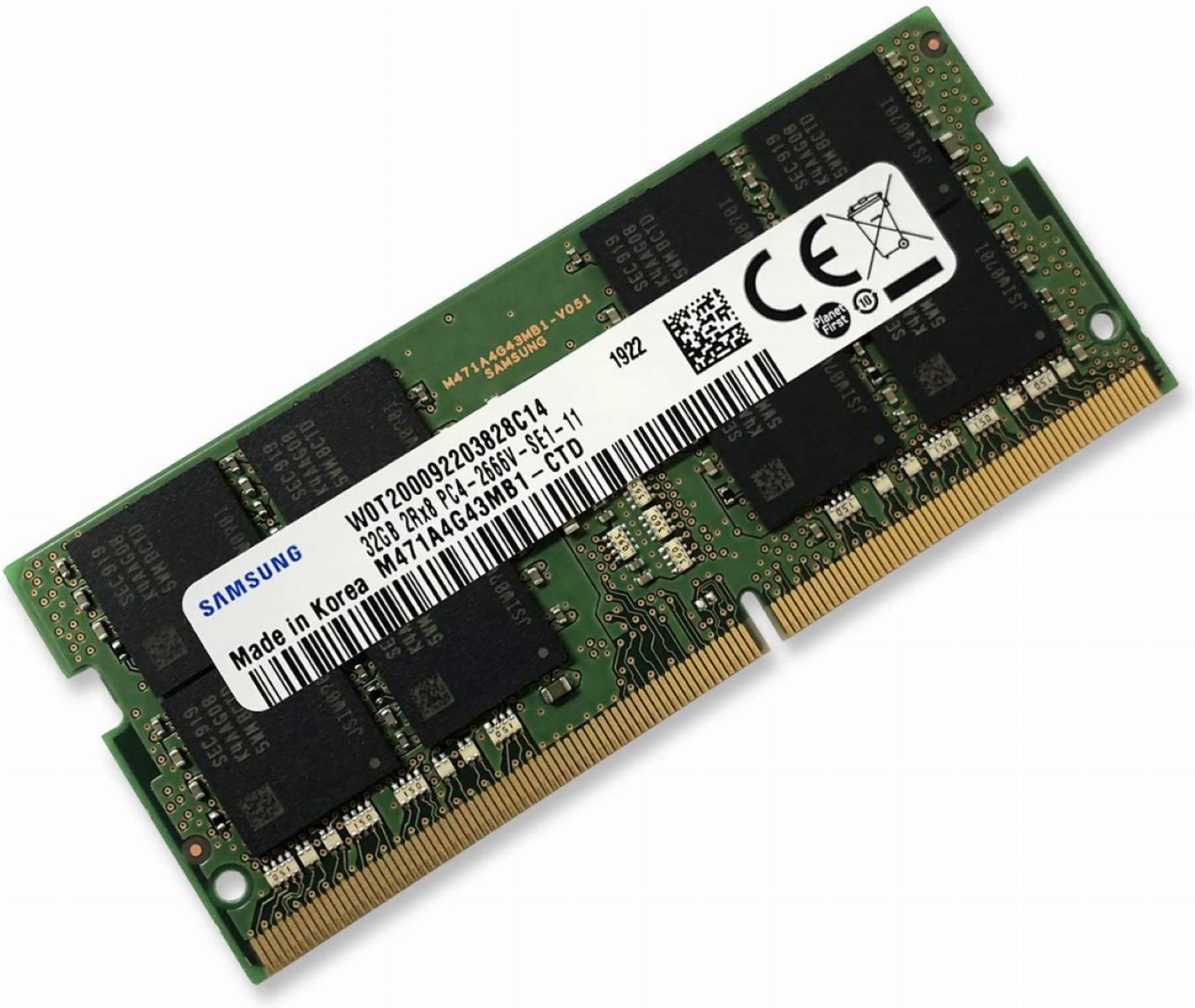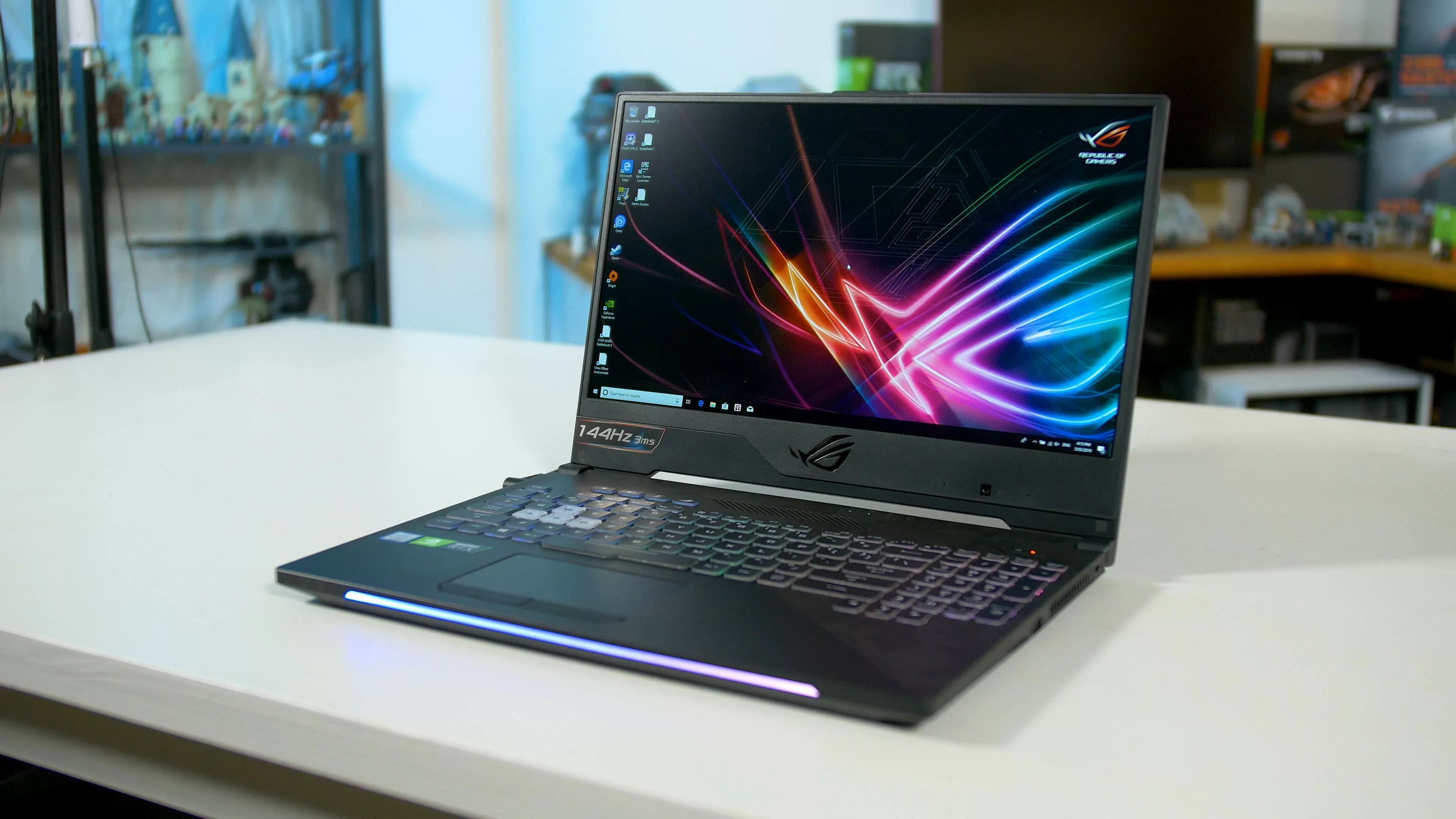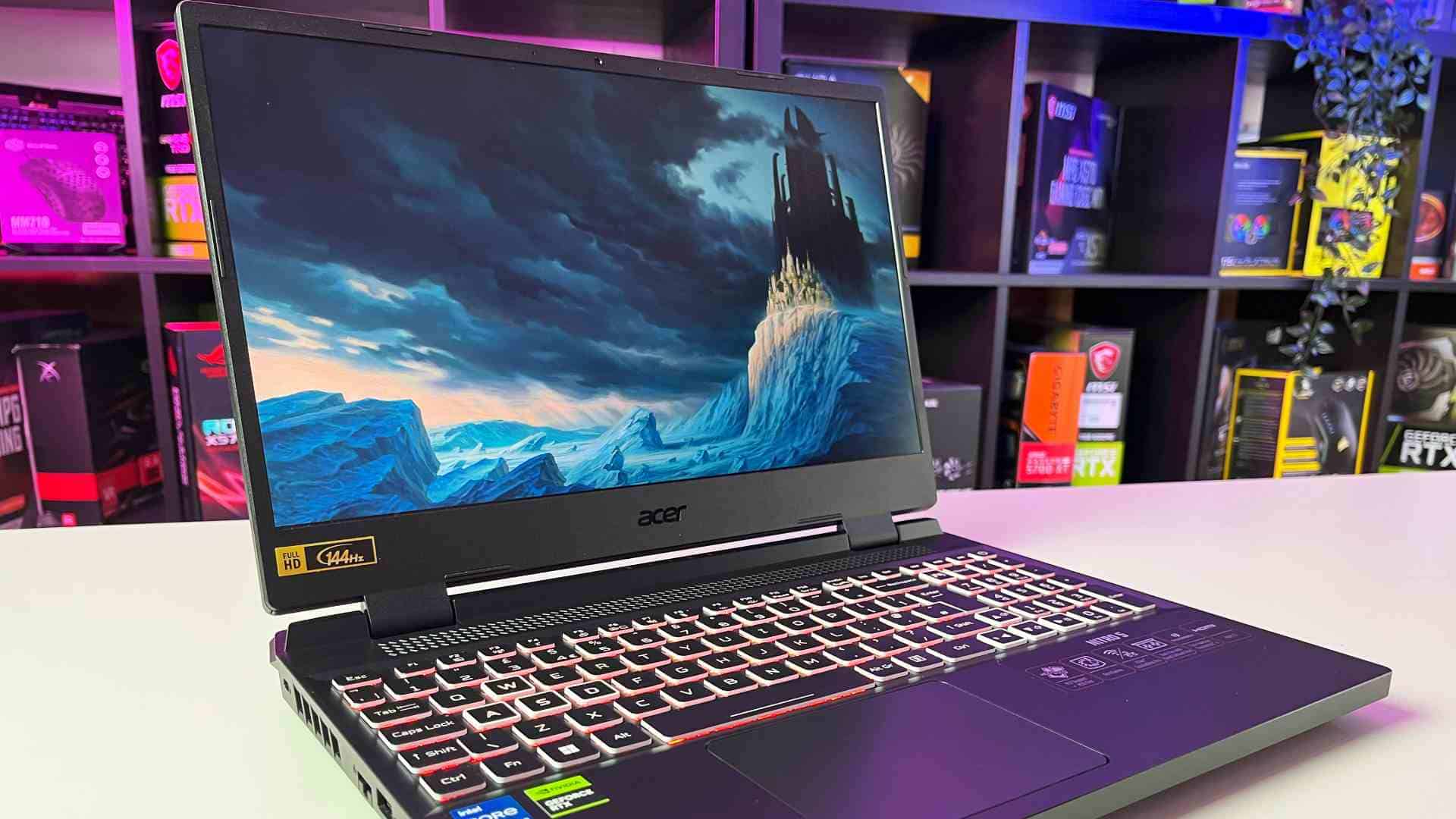Introduction
Welcome to the comprehensive guide on understanding the types of RAM that your laptop needs. RAM, or Random Access Memory, is a crucial component of your laptop’s performance. It plays a critical role in allowing your device to run smoothly and handle multiple tasks efficiently.
Whether you’re a casual user, a professional, or a gamer, having the right kind of RAM can significantly enhance your laptop’s performance. But with so many options available in the market, it can be overwhelming to choose the right type and capacity of RAM for your specific needs.
In this article, we will explore the different types of RAM available, specifically DDR3 and DDR4. We will also discuss how to check the RAM currently installed in your laptop and determine the compatible RAM for your device. Additionally, we’ll cover several essential factors you should consider when choosing the right RAM for your laptop.
So, if you’re ready to learn more about RAM and how it can improve your laptop’s overall performance, let’s dive in!
Understanding RAM
RAM, or Random Access Memory, is a type of computer memory that enables your laptop to quickly access and store data that is actively being used. It serves as a temporary storage space for your operating system, applications, and files while you are using your laptop.
Think of RAM as a workspace for your laptop. The more RAM your laptop has, the larger the workspace, allowing it to handle more tasks and data at once. This results in improved multitasking capabilities, faster loading times, and smoother overall performance.
RAM works in conjunction with your laptop’s processor (CPU). The CPU retrieves data from the RAM, performs calculations or operations on it, and then stores it back into the RAM or saves it to the permanent storage, such as your hard drive or SSD.
RAM is much faster than permanent storage, which means that accessing data from RAM is quicker for your laptop. This is why having an adequate amount of RAM is crucial for a smooth and responsive computing experience.
It’s important to note that RAM is different from permanent storage, such as your hard drive or SSD. Permanent storage is used to store data even when your laptop is turned off, while RAM is cleared when your laptop is rebooted.
The amount of RAM your laptop needs depends on various factors, including the type of tasks you perform, the number of applications you run simultaneously, and the operating system requirements. For basic tasks like web browsing, word processing, and email, 4GB to 8GB of RAM is usually sufficient. However, if you engage in resource-intensive activities like video editing, gaming, or running virtual machines, you may need 16GB or more.
Now that you have a basic understanding of RAM and its importance, let’s explore the different types of RAM available for laptops.
RAM Types
When it comes to RAM for laptops, two main types are widely used: DDR3 and DDR4. These types represent different generations of RAM technology, each with its own advantages and compatibility.
DDR3:
DDR3, or Double Data Rate 3, is the older generation of RAM commonly found in older laptops. It offers reliable performance and is still widely supported by many laptops in use today. DDR3 RAM modules come in various speeds, typically ranging from 1066MHz to 2133MHz.
DDR3 RAM has a lower speed compared to DDR4 but is generally more affordable. It is suitable for everyday computing tasks, such as web browsing, document editing, and light multitasking. However, if you engage in more demanding activities like gaming or video editing, you may want to consider upgrading to DDR4 for better performance.
DDR4:
DDR4, or Double Data Rate 4, is the latest generation of RAM technology and offers improved speed, efficiency, and performance compared to DDR3. DDR4 RAM modules typically start at a speed of 2133MHz and can go up to 3200MHz and higher.
DDR4 RAM is designed to handle more bandwidth and data transfer rates, making it ideal for resource-intensive tasks like gaming, video editing, 3D rendering, and running virtual machines. It can provide a significant boost in overall system performance, allowing for faster application loading times, smoother multitasking, and improved responsiveness.
It’s important to note that DDR4 RAM is not backward compatible with DDR3 slots. This means that if your laptop originally came with DDR3 RAM, you’ll need to check your laptop’s specifications to see if it supports DDR4 RAM before upgrading.
Now that you’re familiar with the different types of RAM available for laptops, let’s move on to understanding the capacity of RAM you may need.
DDR3
DDR3, short for Double Data Rate 3, is an older generation RAM technology. It was introduced as an improvement over its predecessor, DDR2, and is widely used in many older laptops and desktop computers.
DDR3 RAM modules come in various speeds, generally ranging from 1066MHz to 2133MHz. The speed refers to the data transfer rate, indicating how quickly the RAM can access and transfer data.
While DDR3 RAM may not offer the same level of performance as the newer DDR4, it still provides reliable and affordable options for everyday computing tasks. The lower cost of DDR3 RAM makes it an attractive choice for budget-conscious users who don’t require the highest performance.
DDR3 RAM is suitable for activities like web browsing, word processing, multimedia playback, and light multitasking. It can handle these tasks smoothly and provide sufficient performance for most casual users.
However, if you engage in more demanding activities, such as gaming, video editing, or running resource-intensive applications, you may find that DDR3 RAM can limit overall system performance. These tasks rely heavily on memory bandwidth, and DDR3 may struggle to keep up with the data transfer rates required for seamless operation.
If you do have a laptop with DDR3 RAM and desire better performance, one option is to upgrade to a higher speed DDR3 RAM module. This can provide a slight performance boost, although the difference may not be as significant compared to upgrading to DDR4 RAM.
It’s worth noting that DDR3 RAM is not compatible with DDR4 slots. Therefore, if you decide to upgrade, ensure that your laptop’s motherboard supports the DDR3 RAM type and the desired speed.
In summary, DDR3 RAM offers a cost-effective solution for everyday computing tasks and is suitable for casual users. However, for more demanding applications, upgrading to DDR4 RAM may be necessary to harness the benefits of improved performance and higher data transfer rates.
DDR4
DDR4, which stands for Double Data Rate 4, is the latest generation of RAM technology. It succeeds DDR3 and offers significant improvements in terms of performance, speed, and efficiency.
DDR4 RAM modules typically start at a speed of 2133MHz and can go up to 3200MHz and higher. The higher speed allows for faster data transfer rates, resulting in improved system responsiveness and smoother multitasking.
One of the key advantages of DDR4 RAM is its increased memory bandwidth. This means that it can handle more data simultaneously, allowing for faster access to multiple applications and files. The improved memory bandwidth is especially beneficial for resource-intensive tasks such as gaming, video editing, 3D rendering, and running virtual machines.
In addition to the higher speed and better performance, DDR4 RAM is also more energy-efficient compared to DDR3. This is achieved through a lower operating voltage, resulting in reduced power consumption and improved battery life for laptops.
It’s important to note that DDR4 RAM is not backward compatible with DDR3 slots. This means that if your laptop originally came with DDR3 RAM, you’ll need to check your laptop’s specifications to see if it supports DDR4 RAM before upgrading.
Upgrading to DDR4 RAM can provide a significant boost in overall system performance. Activities such as gaming and video editing will benefit from faster loading times, smoother frame rates, and improved rendering speeds. The increased memory bandwidth ensures that your laptop can handle demanding applications and multitask efficiently, even when running multiple resource-heavy tasks simultaneously.
When considering upgrading to DDR4 RAM, it’s essential to check the maximum supported speed by your laptop’s motherboard. Even if you purchase a higher speed DDR4 RAM module, it will default to the maximum supported speed by your motherboard.
In summary, DDR4 RAM offers improved performance, speed, and energy efficiency compared to DDR3. It is the ideal choice for users who engage in demanding tasks such as gaming, video editing, or running resource-intensive applications. However, ensure that your laptop supports DDR4 RAM before making the upgrade.
RAM Capacity
The capacity of RAM refers to the amount of memory your laptop has available for data storage and retrieval. Choosing the right RAM capacity is crucial for ensuring smooth performance and efficient multitasking.
The ideal RAM capacity for your laptop depends on various factors, including the type of tasks you perform and the operating system’s requirements. For basic computing tasks like web browsing, word processing, and email, 4GB to 8GB of RAM is typically sufficient.
However, if you engage in more resource-intensive activities such as gaming, video editing, or running virtual machines, you may benefit from 16GB or even 32GB of RAM. These higher capacities allow for smoother multitasking, faster application loading times, and improved overall performance.
Additionally, the operating system you are using also plays a role in determining the recommended RAM capacity. The minimum requirements can be found on the official website of the operating system or its documentation. It’s important to ensure that your laptop meets or exceeds the recommended RAM capacity to avoid performance issues or slowdowns.
Keep in mind that increasing RAM capacity alone does not automatically guarantee better performance. It is essential to have a balance between the RAM capacity, the processor’s capabilities, and the overall system specifications. Upgrading other components, such as the CPU or storage drive, may be necessary to fully optimize your laptop’s performance.
If you are unsure about the current RAM capacity in your laptop, you can easily check it in the operating system settings. On Windows, you can go to “System” in the Control Panel or use the “Task Manager” to view the amount of RAM installed. On macOS, you can go to the “About This Mac” section in the Apple menu and click on “Memory” to see the RAM capacity.
When upgrading the RAM capacity in your laptop, it’s essential to ensure that your laptop’s motherboard supports the desired capacity. Check the manufacturer’s specifications or consult with a professional to determine the maximum RAM capacity your laptop can handle.
In summary, the RAM capacity you need for your laptop depends on the type of tasks you perform and the operating system requirements. While 4GB to 8GB is typically sufficient for everyday computing, resource-intensive tasks may require higher capacities, such as 16GB or 32GB. Ensure that your laptop’s motherboard supports the desired capacity before upgrading.
How to Check Your Current RAM
If you are unsure about the amount of RAM currently installed in your laptop, you can easily check it using your operating system’s settings. Here’s how:
Windows:
- Open the Control Panel by searching for it in the Start Menu.
- Select “System and Security” and then click on “System.”
- Under the “System” section, you will see information about your laptop, including the installed RAM capacity.
- Alternatively, you can also use the Task Manager by right-clicking on the taskbar and selecting “Task Manager.” In the Task Manager window, go to the “Performance” tab and click on “Memory” to see details about your RAM.
macOS:
- Click on the Apple menu in the top-left corner of your screen.
- Select “About This Mac” from the dropdown menu.
- In the window that appears, click on the “Memory” tab. Here, you will find details about the installed RAM capacity on your laptop.
By following these simple steps, you can quickly check the amount of RAM currently installed in your laptop. Knowing this information will help you determine if it’s necessary to upgrade your RAM capacity for improved performance.
How to Determine the Compatible RAM for Your Laptop
When considering upgrading the RAM in your laptop, it’s crucial to determine the compatible RAM type and specifications to ensure a successful upgrade. Here’s a step-by-step guide on how to determine the compatible RAM for your laptop:
1. Check your laptop’s documentation:
Consult your laptop’s user manual or visit the manufacturer’s website to find information about the supported RAM types and capacities. Look for details like the maximum RAM capacity, compatible RAM speeds, and any specific requirements mentioned for your laptop model.
2. Identify the RAM type:
Determine whether your laptop requires DDR3 or DDR4 RAM. This information can usually be found in the specifications provided by the manufacturer. Remember that DDR4 RAM is not compatible with DDR3 slots, so it’s essential to verify the correct type for your laptop.
3. Check the maximum supported RAM capacity:
Find out the maximum amount of RAM that your laptop can support. This information can be found in your laptop’s documentation or by searching for your laptop model on the manufacturer’s website. It’s important to note that some laptops have limited upgradeability, meaning they may only support a specific maximum RAM capacity.
4. Consider the RAM speed:
Look for information regarding the supported RAM speeds for your laptop. While higher RAM speeds can offer improved performance, it’s crucial to ensure that your laptop’s motherboard can handle those higher speeds. If in doubt, it’s generally safe to choose RAM modules with the same or slightly higher speed as the ones originally installed in your laptop.
5. Determine the number of RAM slots:
Find out how many RAM slots are available in your laptop. This information can vary depending on your laptop model. Knowing the number of slots is important as it helps determine the number of RAM modules you can install and their capacities.
6. Consider the form factor:
Check the form factor of the RAM modules compatible with your laptop. Most laptops use the Small Outline Dual In-Line Memory Module (SO-DIMM) form factor. Ensure that any RAM modules you purchase are the appropriate size to fit into your laptop’s memory slots.
By following these steps and considering the specific requirements of your laptop, you’ll be able to determine the compatible RAM type, capacity, speed, and form factor. This information will guide you in making an informed decision when upgrading your laptop’s RAM, ensuring compatibility and optimal performance.
Factors to Consider When Choosing RAM
When selecting RAM for your laptop, there are several important factors to consider that will ensure you choose the right modules for your needs. Here are the key factors to keep in mind:
1. Compatibility:
Check the compatibility of the RAM with your laptop’s motherboard and existing RAM modules. Determine the correct RAM type (DDR3 or DDR4) and ensure that the speed, capacity, and form factor are compatible with your laptop’s specifications.
2. Capacity:
Consider the amount of RAM you need based on your specific requirements. For basic tasks, 4GB to 8GB of RAM is usually sufficient, while resource-intensive activities like gaming or video editing may require 16GB or more. Ensure your laptop supports the desired RAM capacity.
3. Speed:
The speed of the RAM, referred to as the data transfer rate, affects the overall performance of your laptop. Higher RAM speeds can result in faster data access and improved multitasking capabilities. However, ensure that your laptop’s motherboard supports the desired RAM speed.
4. Budget:
Consider your budget when choosing RAM for your laptop. DDR4 RAM modules tend to be more expensive than DDR3, but they offer improved performance. Evaluate the balance between cost and performance to find the best fit for your needs.
5. Brand and Quality:
Choose reputable brands and ensure that the RAM modules come from trusted manufacturers. Quality RAM modules can offer better stability, compatibility, and longevity, reducing the risk of issues down the line.
6. Future Upgradability:
Consider your future needs and whether you may want to upgrade your laptop’s RAM further down the line. If you anticipate requiring more memory in the future, it may be beneficial to choose a laptop with additional RAM slots or opt for higher-capacity modules from the start.
7. Warranty:
Check for warranty coverage when purchasing RAM modules. A warranty provides peace of mind and ensures that you can seek assistance or replacement if any issues arise with your RAM.
By considering these factors, you can make an informed decision when choosing RAM for your laptop. This will result in a compatible and optimized configuration, enhancing your laptop’s performance and ensuring a smooth computing experience.
Conclusion
Choosing the right RAM for your laptop is essential for optimal performance and efficient multitasking. Understanding the different types of RAM, such as DDR3 and DDR4, and their respective benefits will help you make an informed decision.
When determining the compatible RAM for your laptop, consider factors like compatibility, capacity, speed, budget, brand, and future upgradability. Checking your laptop’s documentation, consulting the manufacturer’s website, and verifying the maximum supported RAM capacity are crucial steps in selecting the appropriate RAM modules.
Remember to check your current RAM capacity and evaluate your specific needs. For basic tasks, 4GB to 8GB of RAM is usually sufficient, while more resource-intensive activities may require 16GB or more.
Additionally, ensure that your laptop’s motherboard supports the desired RAM type, speed, and form factor. Choosing RAM modules from reputable brands and considering warranty coverage provides peace of mind and ensures the quality and longevity of your investment.
By considering these factors and making an informed decision, you can upgrade your laptop’s RAM with confidence, resulting in improved performance, faster loading times, smoother multitasking, and an overall enhanced computing experience.
So, whether you’re a casual user, a professional, or a gamer, upgrading your laptop’s RAM is a worthwhile investment that can significantly improve its performance and productivity.







